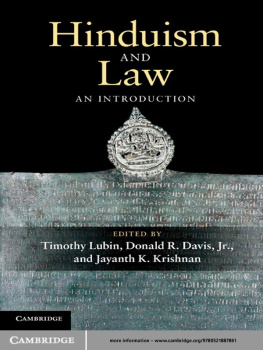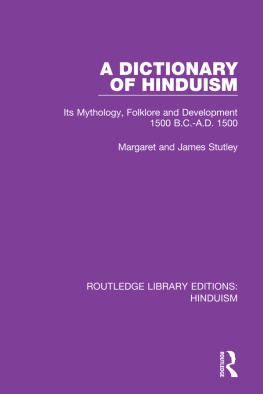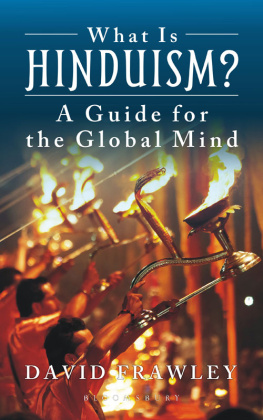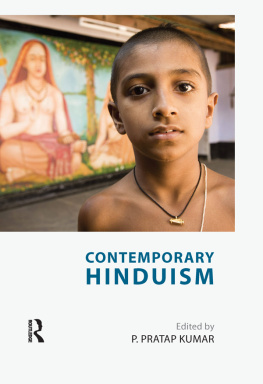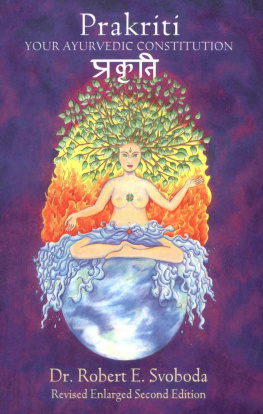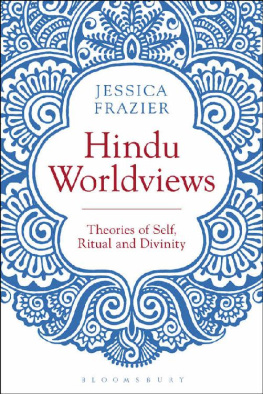Tritiya-Prakriti:
People of the Third Sex
Understanding
Homosexuality, Transgender Identity, and Intersex Conditions Through Hinduism
Amara Das Wilhelm
Copyright 2008 by GALVA-108, Inc.
For more information on the subject matter of this book,
please visit our website at:
www.galva108.org
First published in 2003 by
Xlibris Corporation
Philadelphia, PA
Library of Congress Control Number:2005909548
ISBN:Hardcover:978-1-4134-6420-7
Softcover: 978-1-4134-3534-4
Ebook978-1-4500-8057-6
All rights reserved. No part of this book may be reproduced or
transmitted in any form or by any means, electronic or mechanical,
including photocopying, recording, or by any information storage and retrieval system, without permission in writing from the copyright owner.
Rev. date: 05/22/2013
To order additional copies of this book, contact:
Xlibris Corporation
1-888-795-4274
www.Xlibris.com
22212
Contents
Dedicated to
my Sri Guru-pada-padma
His Divine Grace
A.C. Bhaktivedanta Swami Prabhupada
I envy no one, nor am I partial to anyone. I am equal to all. But whoever renders service unto Me in devotion is a friend, is in Me, and I am also a friend to him.
(Lord Krsna in the Bhagavad Gita, 9.29)
I offer my humble dandavats unto the lotus feet of my spiritual master, nitya-lila pravista om visnupada paramahamsa astottara-sata Sri Srimad Bhaktivedanta Swami Prabhupada. By his mercy and inspiration only, I attempt to write this book in the service of Sri Caitanya Mahaprabhu and the Vaishnavas, even though I am completely fallen and unqualified.
Many years ago, at the age of eighteen, I was cooking chapatis in the kitchen of a Hare Krsna temple in rural Virginia when I heard a most curious and interesting tape recording. It was a discussion between my Guru Maharaja, A.C. Bhaktivedanta Swami Prabhupada, and one of his disciples, Hayagriva dasa. On that recording, Srila Prabhupada mentioned a class of men in India who were neither man nor woman by nature, but rather a combination of both. These people, he described, kept their own societies, bestowed blessings, and were well known as dancers and performers. They even performed before Lord Caitanya, an important incarnation of Krsna, and blessed Him when He first appeared in this world. Srila Prabhupada spoke about this class of people in a positive way, yet he was somewhat frustrated in his attempt to define them in Western terms.
But I understood Srila Prabhupada perfectly well. He was talking about people like me. You see, in addition to having joined the Hare Krsna movement at the age of seventeen, I was also gay. I had been gay ever since I could remember and had never experienced any attraction for women. As a child, I was more inclined to play with girls and never enjoyed boyish things like sports or fighting, and upon reaching puberty I found my sexual orientation to be entirely homosexual. Moving into adulthood, I excelled in traditionally female tasks like cooking, cleaning, sewing, etc. In this way, I was always aware that I had both male and female qualities, but at the same time I did not fit neatly into either role.
Listening to this tape was like a breath of fresh air. I listened to it over and over again. Yes, I thought, there was a place for people like me in Hindu culture and within the Krsna religion. My spiritual master was acknowledging this, and by the Lords arrangement I had found this tape recording at the bottom of an overlooked shoebox full of old cassettes.
Many years later, after a lifetime of celibacy, asceticism, and devotion to Krsna, I found myself at the age of forty, wondering what special service I might be able to perform for my spiritual master, who had left this world many years ago in 1977. At the same time, I had read some articles and books written by my Godbrothers that were very derogatory and even demonizing of gay and lesbian people. How strange, I thought, that members of a movement as compassionate and merciful as Lord Caitanyas, and a religion as diverse and multifaceted as Hinduism, should speak so ill about other types of human beings, prejudging them. Most of the statements were ignorant and uninformed, and many were even completely untrue. Others were blanketed in a type of insincere pity for a class of people whom they mistakenly labeled as especially degraded, unfortunate, or somehow lower than everyone else. Some even suggested that there was no place for homosexual people within Hinduism. I found these misunderstandings to be perpetuated throughout all branches of the religion, and they were often accompanied by collective acts of mistreatment, ridicule, exclusion, or outright cruelty. I personally witnessed many gay adherents of the Krsna faith suffer from emotional isolation, depression, and even suicide as a result of all of this lack of understanding about third - gender people.
None of these negative and destructive attitudes made any sense to me, especially when I held them up against the statements I had heard so long ago from Srila Prabhupada on that tape. Nor did they make any sense within my own personal experience as a gay Vaishnava and devotee of Lord Krsna. So I decided to investigate further and delve deeply into all of the ancient Sanskrit texts and Vedic literatures. I decided to research this thoroughly and find out exactly what Hinduism taught about homosexuality.
What I quickly found out was quite surprising. Hinduism acknowledged a third sex, or people who were by nature a combination of male and female, and such people were considered special in many ways. They were thoroughly described in the Kama Shastra and were not punished under the rigid laws of the Dharma Shastra. People of the third sex were described as homosexual, transgender, and intersexed persons; they were such by birth and consequently allowed to live their lives according to their own nature. Gay males were never expected to marry women, as they are almost always forced to do today in modern Hinduism, and in fact, Sanskrit texts specifically forbid this. Similarly, lesbian women were not forced to marry men but were allowed to earn their own livings independently. Even gay marriage, such a controversial issue at the time of this writing, was acknowledged in the Kama Shastra many thousands of years ago.
The recognition of a third sex in ancient India and Hinduism is highly relevant in many ways. Our own modern-day society has only recently begun to understand sexual orientation, gender identity, and intersex conditions, and our legal and social systems are just beginning to catch up with and accommodate such people in a fair and realistic way. As modern civilization becomes more open and informed, it will be impossible to ignore and mistreat these types of people for much longer. We are seeing the impact of this new attitude of social awareness in our everyday lives, yet ancient India had already addressed and previously resolved this issue many thousands of years ago in the course of its own civilizations development. Indeed, there is much we can learn from ancient Indias knowledge regarding the recognition and accommodation of a third sex within society.
There is to date a proliferation of books on all aspects of gay and lesbian studies, even in regard to various religions, but there is very little information concerning homosexuality and Hinduism. This is a shame since Hinduism has so much to say about this topic; more so, I believe, than any other religion. While there are a few good books available, they are often only written from a heterosexual perspective, and heterosexuals notoriously misunderstand homosexuality. On the other hand, some books have been written from a gay perspective, but the authors themselves were not fully devoted or immersed within the practice of Hinduism. It is my wish to offer a more complete perspective on this topic by being both a person of the third sex and a lifetime devotee of the Hindu faith.
Next page

